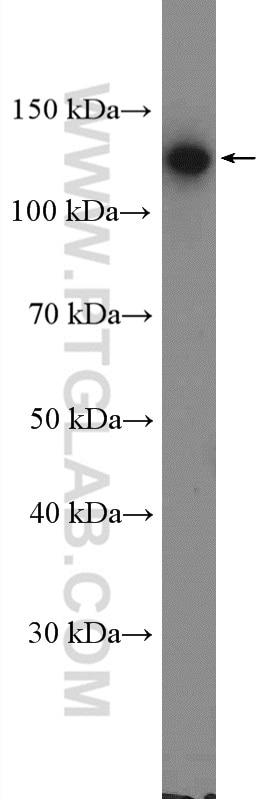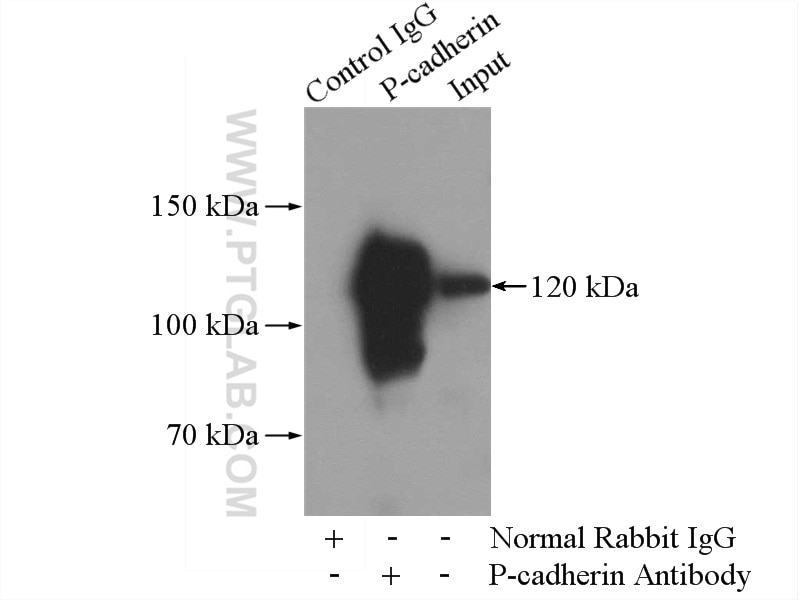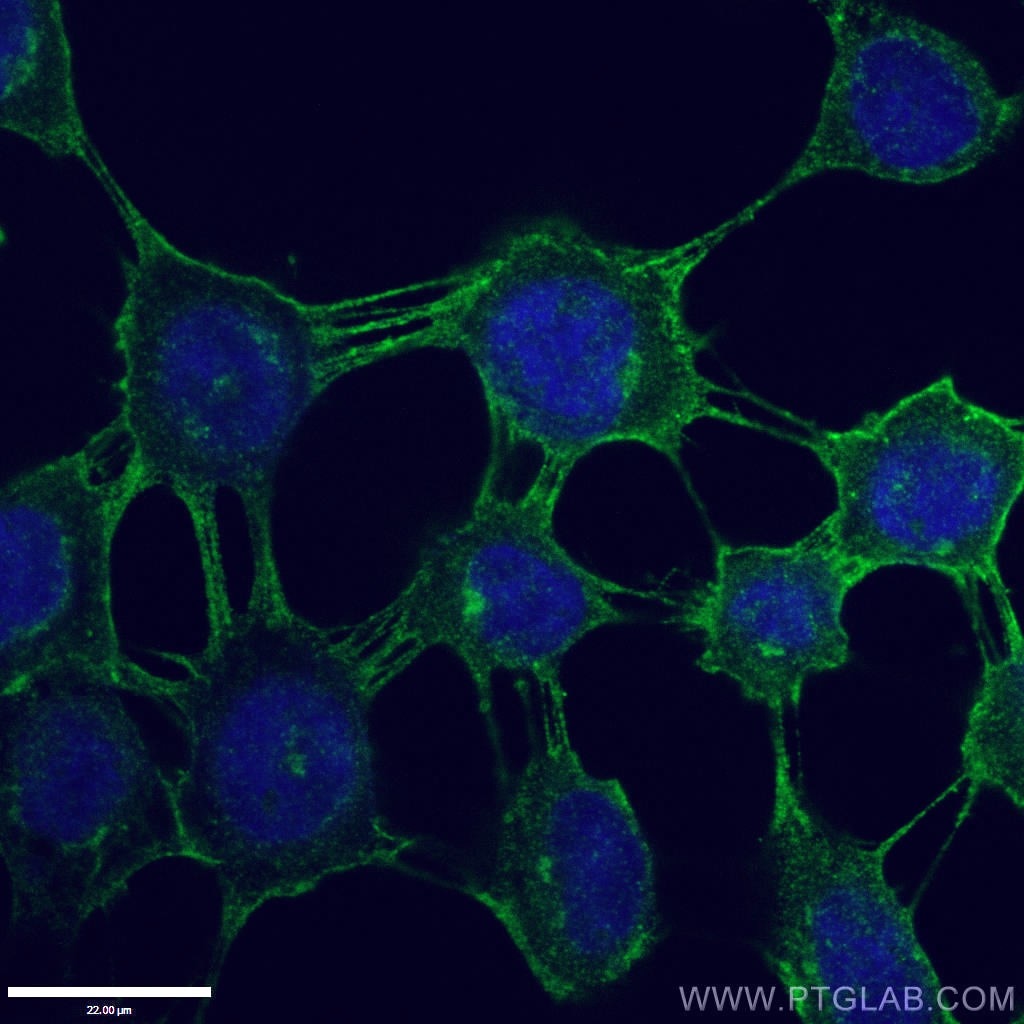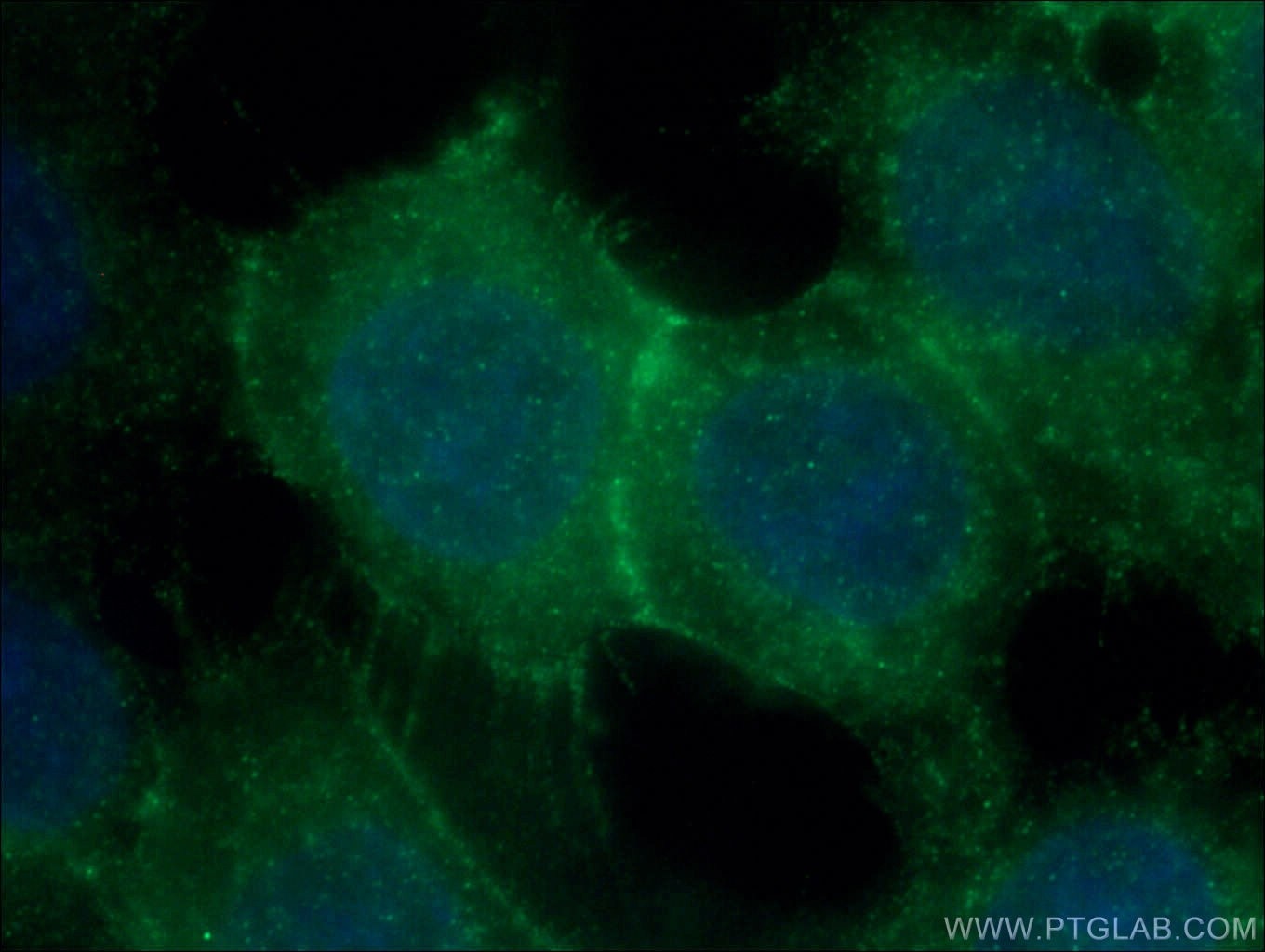Anticorps Polyclonal de lapin anti-P-cadherin
P-cadherin Polyclonal Antibody for WB, IF/ICC, IP, ELISA
Hôte / Isotype
Lapin / IgG
Réactivité testée
Humain, rat, souris
Applications
WB, IHC, IF/ICC, IP, ELISA
Conjugaison
Non conjugué
N° de cat : 13773-1-AP
Synonymes
Galerie de données de validation
Applications testées
| Résultats positifs en WB | cellules A431, |
| Résultats positifs en IP | cellules A431 |
| Résultats positifs en IF/ICC | cellules A431, |
Dilution recommandée
| Application | Dilution |
|---|---|
| Western Blot (WB) | WB : 1:500-1:2000 |
| Immunoprécipitation (IP) | IP : 0.5-4.0 ug for 1.0-3.0 mg of total protein lysate |
| Immunofluorescence (IF)/ICC | IF/ICC : 1:50-1:500 |
| It is recommended that this reagent should be titrated in each testing system to obtain optimal results. | |
| Sample-dependent, check data in validation data gallery | |
Applications publiées
| WB | See 6 publications below |
| IHC | See 3 publications below |
| IF | See 3 publications below |
Informations sur le produit
13773-1-AP cible P-cadherin dans les applications de WB, IHC, IF/ICC, IP, ELISA et montre une réactivité avec des échantillons Humain, rat, souris
| Réactivité | Humain, rat, souris |
| Réactivité citée | rat, Humain, souris |
| Hôte / Isotype | Lapin / IgG |
| Clonalité | Polyclonal |
| Type | Anticorps |
| Immunogène | P-cadherin Protéine recombinante Ag4758 |
| Nom complet | cadherin 3, type 1, P-cadherin (placental) |
| Masse moléculaire calculée | 829 aa, 91 kDa |
| Poids moléculaire observé | 120 kDa |
| Numéro d’acquisition GenBank | BC041846 |
| Symbole du gène | P-cadherin |
| Identification du gène (NCBI) | 1001 |
| Conjugaison | Non conjugué |
| Forme | Liquide |
| Méthode de purification | Purification par affinité contre l'antigène |
| Tampon de stockage | PBS avec azoture de sodium à 0,02 % et glycérol à 50 % pH 7,3 |
| Conditions de stockage | Stocker à -20°C. Stable pendant un an après l'expédition. L'aliquotage n'est pas nécessaire pour le stockage à -20oC Les 20ul contiennent 0,1% de BSA. |
Informations générales
Cadherins are a family of transmembrane glycoproteins that mediate calcium-dependent cell-cell adhesion and play an important role in the maintenance of normal tissue architecture. P-cadherin (placental cadherin), also known as CDH3 (cadherin 3), is a classical member of the cadherin superfamily which also include E-, N-, R-, and B-cadherins. Aberrant expression of P-cadherin has been reported in many cancers, including breast, gastric, endometrial, ovarian, and prostate cancer.
Protocole
| Product Specific Protocols | |
|---|---|
| WB protocol for P-cadherin antibody 13773-1-AP | Download protocol |
| IF protocol for P-cadherin antibody 13773-1-AP | Download protocol |
| IP protocol for P-cadherin antibody 13773-1-AP | Download protocol |
| Standard Protocols | |
|---|---|
| Click here to view our Standard Protocols |
Publications
| Species | Application | Title |
|---|---|---|
Nat Commun Symmetry breaking of tissue mechanics in wound induced hair follicle regeneration of laboratory and spiny mice. | ||
Mol Ther Nucleic Acids Inhibition of the lncRNA MIAT prevents podocyte injury and mitotic catastrophe in diabetic nephropathy. | ||
Aging (Albany NY) Transcriptional dysregulation of TRIM29 promotes colorectal cancer carcinogenesis via pyruvate kinase-mediated glucose metabolism. | ||
Front Oncol Screening and Identification of Key Biomarkers of Gastric Cancer: Three Genes Jointly Predict Gastric Cancer. | ||
Int J Biol Sci KLF4-Mediated CDH3 Upregulation Suppresses Human Hepatoma Cell Growth and Migration via GSK-3β Signaling. | ||
Dev Dyn Denticleless E3 ubiquitin protein ligase (DTL) maintains the proliferation and differentiation of epidermis and hair follicles during skin development |





